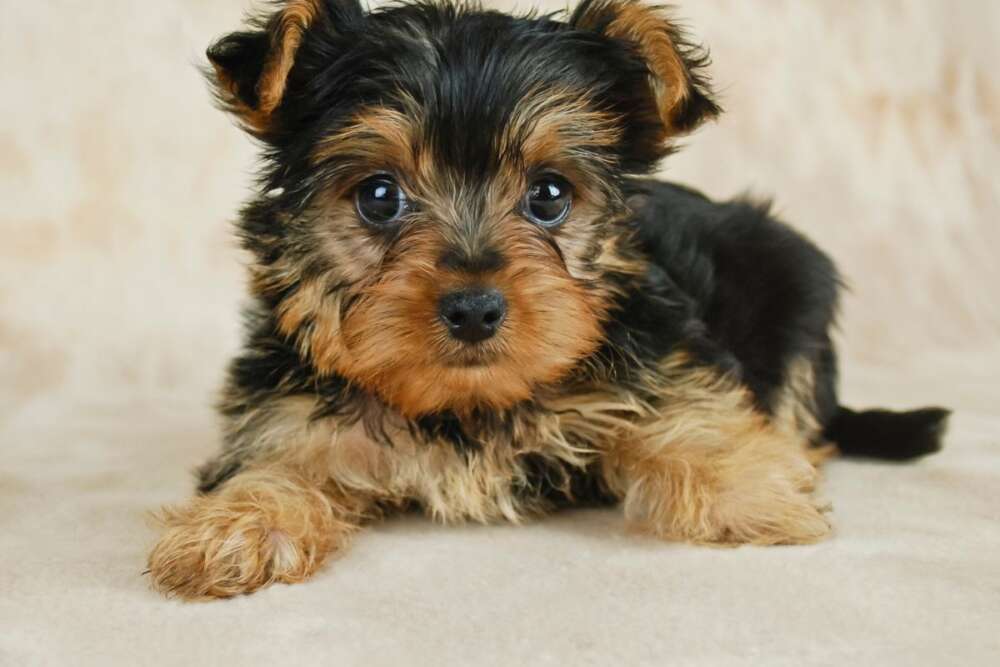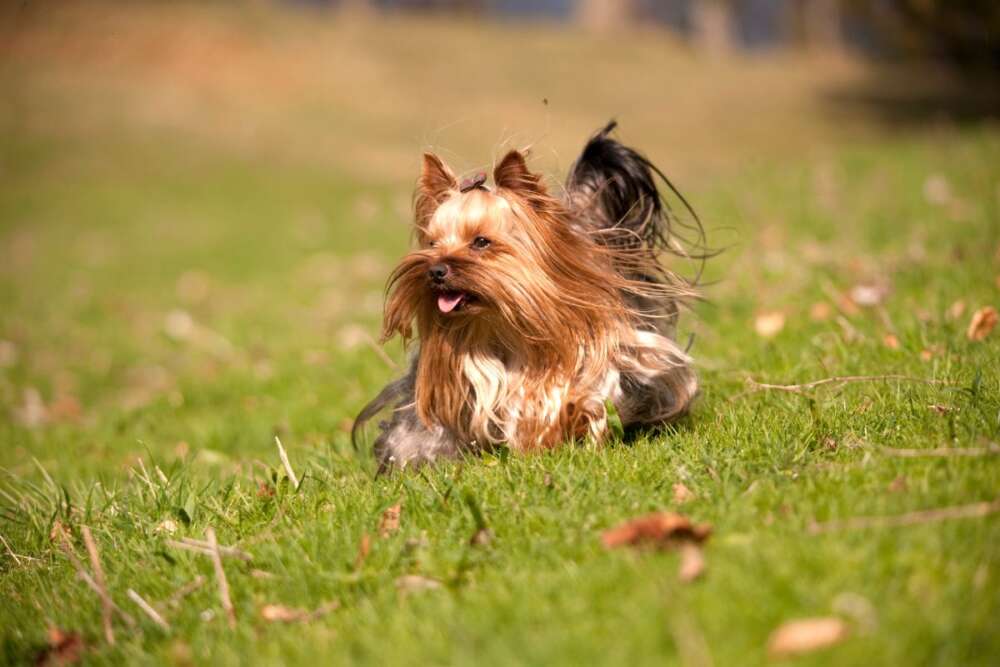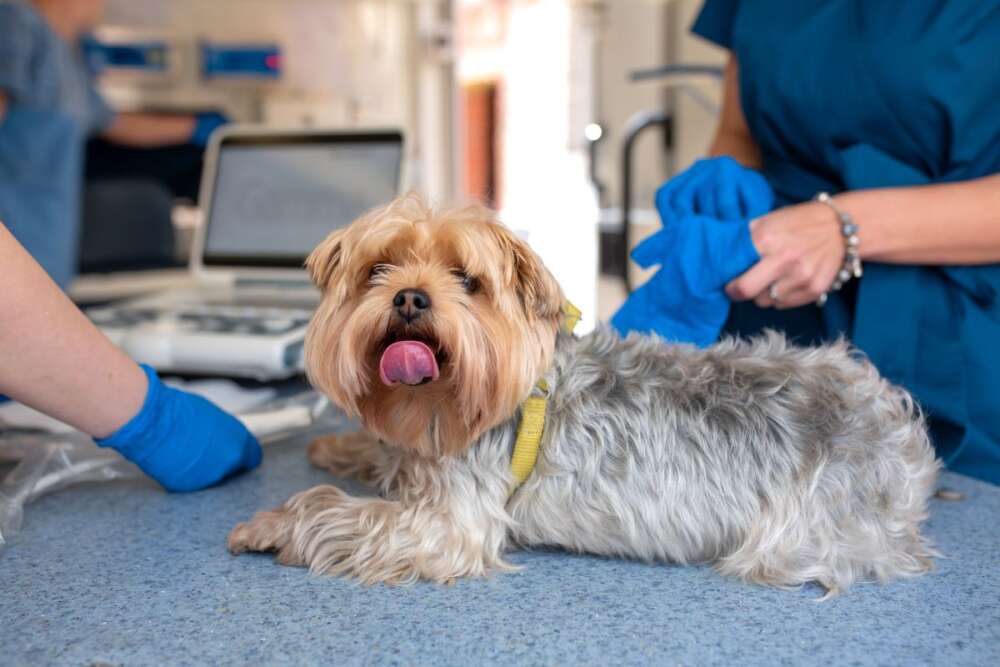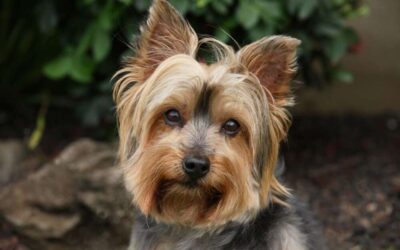Yorkshire Terriers are a popular dog breed known for their silky coats and unique coloring. This blog post will explore the different types of colors Yorkshire Terriers can come in, their characteristics, and how they are bred.
Key Takeaways
| Color Variations | Characteristics |
|---|---|
| Black and Tan, Black and Gold Yorkies | Distinctive black and tan coat, weighs between 4 to 7 pounds |
| Blue and Gold Yorkies | Unique blue and gold coat, playful and energetic personalities |
| Black, Blue Born/Parti, Red Legged Yorkies | Various rare colorations, bred through specific genetic combinations |
All purebred Yorkshire Terrier puppies are born with black and tan coats, but the shades and proportions can vary. It is possible to have black and gold Yorkies, blue and gold, blue and tan, and even wholly black Yorkies. Some Yorkshire Terriers can also have a brown coat, known as chocolate Yorkies, and very rarely, some may have a red secondary color, red-legged Yorkies.
Party Yorkies are another type of purebred Yorkie with a specific gene that gives them their distinct brown, tan, and white coat. Breeding two party Yorkie parents with the same gene is required to produce a litter of party Yorkies.
In the following sections, we will go into more detail about each of these color variations and what makes them unique.
Black and Tan Yorkies

Black and Tan Yorkies are a unique variation of the Yorkshire Terrier breed known for their striking black and tan coat color. While traditional Yorkies are known for their blue and gold coats, the Black and Tan variation is highly sought after by dog enthusiasts worldwide.
Their Appearance
Black and Tan Yorkies are more minor, typically weighing between 4 to 7 pounds and standing at 8 to 9 inches. Their signature coat color features a glossy black coat with tan highlights on their face, chest, and legs. These dogs have a compact, well-proportioned body with erect ears and perky tails.
Aside from their unique coat, Black and Tan Yorkies share many of the same physical and behavioral traits as traditional Yorkies. They are known for their high energy, playful nature, and loyalty to their owners. These dogs make excellent pets for families or individuals looking for a loving and affectionate companion.
Black and Gold Yorkies

Black and Gold Yorkies, also known as Black and Tan Yorkies, are a popular Yorkshire Terrier breed color variation. These dogs have a distinctive coat that is primarily black with tan markings on their eyebrows, cheeks, chest, legs, and under the tail.
Appearance
Black and Gold Yorkies are small dogs, typically weighing between 4 and 7 pounds and standing about 8 to 9 inches tall at the shoulder. They have a compact and well-proportioned body with a straight back, tiny feet, and a silky, straight, glossy coat. The black coloration is dominant in their jacket, and the tan markings are usually found above the eyes, cheeks, chest, legs, and tail.
Their distinctive appearance and adorable looks make them one of the most sought-after breeds. However, breeding them can be challenging since the black and gold coloration results from a recessive gene. This means both parents must have the black and tan coloration gene to produce offspring with this coat pattern.
Despite this challenge, Black and Gold Yorkies remain popular for those looking for a loyal and loving companion dog with a striking appearance.
Blue and Gold Yorkies

Blue and Gold Yorkies are a unique and rare Yorkshire Terrier breed color variation. These adorable pups have a striking combination of blue and gold hues in their fur, giving them a one-of-a-kind appearance. The AKC does not recognize Blue and Gold YorkiesC as an official color variation, but they have become increasingly popular among Yorkie lovers.
Appearance
Blue and Gold Yorkies have a blue and gold coat unique to their breed. The blue coloration results from a diluted black gene, while the gold results from a recessive red gene. The blue can range from a light silvery blue to a darker steel blue, while the gold is typically a deep tan or golden color. Their coat is usually long, straight, and silky.
Despite their unique coloring, Blue and Gold Yorkies have the same physical characteristics as other Yorkies, including their small size, pointed ears, and compact body. They typically weigh between 4-7 pounds and stand around 7-8 inches tall at the shoulder.
Temperament
Blue and Gold Yorkies are known for their playful and energetic personalities. They are intelligent and affectionate and love being around their owners. They can be stubborn sometimes but make wonderful family pets with consistent training and socialization.
These pups are also known for their bravery and often bark to alert their owners of potential threats or intruders. However, this trait can also make them prone to excessive barking if not adequately trained.
Black Yorkies
Purebred black Yorkies are relatively rare compared to their tan and blue counterparts. This is because the black coloration is not a standard color for the Yorkshire Terrier breed, which is recognized by most kennel clubs worldwide. Many breeders do not intentionally breed for black Yorkies, and those that do often produce them through selective breeding over several generations.
Breeding
However, black Yorkies can also be created through crossbreeding with other breeds with the black gene. For example, breeders may crossbreed a Yorkie with a black Poodle, Schnauzer, or Scottish Terrier to produce black Yorkies. The offspring may not always have the desirable traits of the purebred Yorkie, such as their small size and elegant coat, and can have more variation in size, coat texture, and temperament.
Appearance
The main differences between purebred and crossbred black Yorkies are their appearance and temperament. Purebred black Yorkies tend to have a more consistent appearance with their distinctive silky, long coat that is typically black and tan. They are also known for their affectionate and intelligent nature. On the other hand, crossbred black Yorkies may have a more varied appearance, depending on the breeds used in their breeding.
Temperament
They may also have different temperaments, depending on the character of the parent breeds. Crossbred black Yorkies can make excellent pets, but it’s essential to research the species used in their breeding to understand their potential traits and health issues.
Blue Born / Parti Yorkies
Blue Born Yorkies, or Parti Yorkies, are a color variation of the Yorkshire Terrier breed that has become increasingly popular recently. They are born with a predominantly white coat with some black or blue markings. However, their skin can change color as they age, and the black or blue markings can become more prominent.
As Blue Born Yorkies mature, their coat may transition to a combination of blue, silver, and tan, with some white markings. The amount of black or blue hair can vary, and some may have a primarily blue or black coat, while others may have a tan, principally skin with blue or black markings. The amount and distribution of the black and tan hair can also change over time, making it difficult to predict their final appearance.
It’s essential to note that Blue Born Yorkies should not be mistaken for purebred blue Yorkies. Blue is not a recognized color for the Yorkshire Terrier breed and is considered a fault. Blue Yorkies are typically produced by breeding with other species that carry the dilution gene, such as the Maltese or the Biewer Terrier.
Red Legged Yorkies
Red-legged Yorkies are a rare variation of the Yorkshire Terrier breed, characterized by their distinctive coat color pattern. This variation is not recognized by the American Kennel Club or other major kennel clubs worldwide.
Red-legged Yorkies are born with a predominantly black or blue coat with tan markings, but as they grow, they develop a unique pattern of red or rust-colored hair on their legs. This can be a small patch of red or extend up to the body, creating a striking contrast with their black or blue coat.
Appearance
The appearance of the red-legged pattern is caused by a genetic mutation that affects the pigment distribution in the hair follicles. Specifically, it results from a fault in the agouti signaling protein (ASIP) gene, which controls the distribution of black pigment in the coat. In red-legged Yorkies, the mutation causes the ASIP gene to produce less black stain on the legs, resulting in the appearance of red or rust-colored hair.
Red-legged Yorkies have a unique appearance that differentiates them from other Yorkie variations. They tend to be slightly larger than standard Yorkshire Terriers, and their coat is typically thicker and coarser. They are also known for their playful and affectionate nature, making them great family pets.
Final Thoughts
In conclusion, Yorkshire Terriers are known for their small size, intelligence, and distinctive coat. The Yorkshire Terrier breed comes in different coat colors and patterns, including tan, blue, black, red-legged, and Parti variations. It’s essential to understand the genetics behind each color to appreciate the unique beauty of each coat and avoid misconceptions about them.
Understanding the genetics of Yorkie coat colors can also help breeders produce healthy and desirable traits in their breeding programs. However, it’s important to remember that coat color should not be the sole factor in choosing a Yorkie. Health, temperament, and other factors should also be considered when selecting a pet.
Overall, Yorkie coats are a testament to the beauty and diversity of the animal world. Each color and pattern is unique, and appreciating their beauty is a joy. Whether you prefer the classic tan and black or the more unique blue or red-legged variations, Yorkshire Terriers are a wonderful breed with coats that will turn heads and capture hearts.
FAQs
What causes the color variations in Yorkshire Terriers?
Color variations are caused by different genetic combinations.
How are Black and Gold Yorkies bred?
Bred by parents having black and tan coloration gene.
Are Blue and Gold Yorkies recognized by AKC?
No, they are not recognized by the AKC.
How are black Yorkies created?
Through selective breeding or crossbreeding with black gene carriers.
What causes the red-legged pattern in Red Legged Yorkies?
A mutation in the agouti signaling protein (ASIP) gene.

As a lifelong dog lover, I fell in love with Yorkies for their spunky personalities, intelligence, and unwavering loyalty.
As a dedicated Yorkie owner, I have spent years learning about the breed and how to provide the best possible care for them. From finding the proper diet to exercise, and so much more! I take every aspect of my Yorkie’s life seriously.
In addition to being a loving dog parent, I’m an avid blogger, sharing my experiences and insights on all things Yorkie-related. From training tips to grooming advice, Yorkieclothing.com is a go-to resource for other Yorkie owners worldwide.




